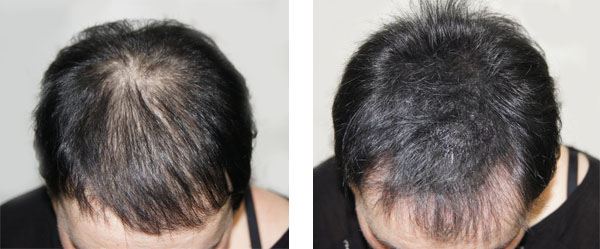So you see more hair tangled in your brush after each combing session. Perhaps you are now wondering how to stop hair loss. But before that, you want to understand the causes of hair shedding. Is it normal to lose so much hair? What triggers hair loss? How can you stop hair loss?
What Causes Excessive Shedding and How To Stop Hair Loss?
Hormonal changes, genetics, certain medications, post-pregnancy, poor diet, stress, nutritional deficiencies, and medical conditions are blamed for hair loss. Your genes or family history of baldness can cause pattern hair loss.
If your diet lacks nutrition, you are prone to hair shedding. A balanced diet, complete with healthy fats, protein, fruits, vegetables, and fiber, nourishes your body to maintain energy levels and proper health. This includes hair health and a strong immune system.
When it comes to diet to stop hair loss, you want to ensure proper hydration and limit saturated fats. In addition to this, keep a check on your excess sodium and sugar intake. A well-balanced diet with minimally processed foods can sustain you long and reduce the risk of disease. This also aids in hair growth unless your causes of hair shedding are genetic or related to a health condition.
Treat Underlying Health Condition
If you have a thyroid problem, you are more likely to suffer from hair shedding. The same holds true for stress, anemia, and nutritional deficiencies. Treating those hidden health scares can help reduce hair loss.
Use minoxidil (Rogaine)
You have heard a lot about Rogaine as a hair loss treatment. Applying this topical solution can help reduce hair loss and promote hair growth. However, one big problem with this solution is that it only works as long as you apply it. The moment you discontinue the treatment, hair loss begins again.
Improve hair practices
When it comes to hair care, it is essential to improve hair practices by addressing the overall health of your hair. Use sulfate- and paraben-free products. Avoid chemical treatments and condition your hair with coconut oil to prevent damage and maintain moisture. Also, limit the use of hair dryers as excess heat can damage hair.
Should You Go for a Hair Transplant To Stop Hair Loss?
If you have thinning or balding hair that shows no sign of receding, a hair transplant may be an option as a permanent solution. However, a transplant may cause scarring, is painful, and takes longer to heal.
That means you may not be ready to return to everyday life soon if you have a transplant. Worst still, since a transplant is an invasive procedure, it is painful, and there are chances of side effects that may affect your quality of life. Last but not least, it is a costly procedure that can be quite discomforting.
How successful is SMP for Hair Loss?
Instead of wearing wigs or hair systems that look fake, there is another hair loss treatment. Scalp micropigmentation is a least invasive procedure that uses microneedles to implant matching pigments into the balding or thinning patches. No, it cannot slow hair loss, nor can SMP help with regrowth. It can cover your scalp problems effectively, which can boost your self-esteem. What’s more, it gives you a youthful appearance and is permanent. That means you can enjoy the look of a fuller head of hair for years to come without worrying about hair loss.
Of course, you may need to refresh the treatment after a few years to keep the look fresh forever. But there is a twist.
SMP is successful only when scalp experts perform the procedure. SMP practitioners have undergone training and certification and have the skills to do the job. Choosing a tattoo artist for scalp micropigmentation could be the worst decision of your life.
Let the best Phoenix SMP technicians guide you through your scalp micropigmentation journey. Contact scalp experts at DermiMatch Clinic with your scalp problem. They can guide you better and help with the best scalp micropigmentation treatment.

